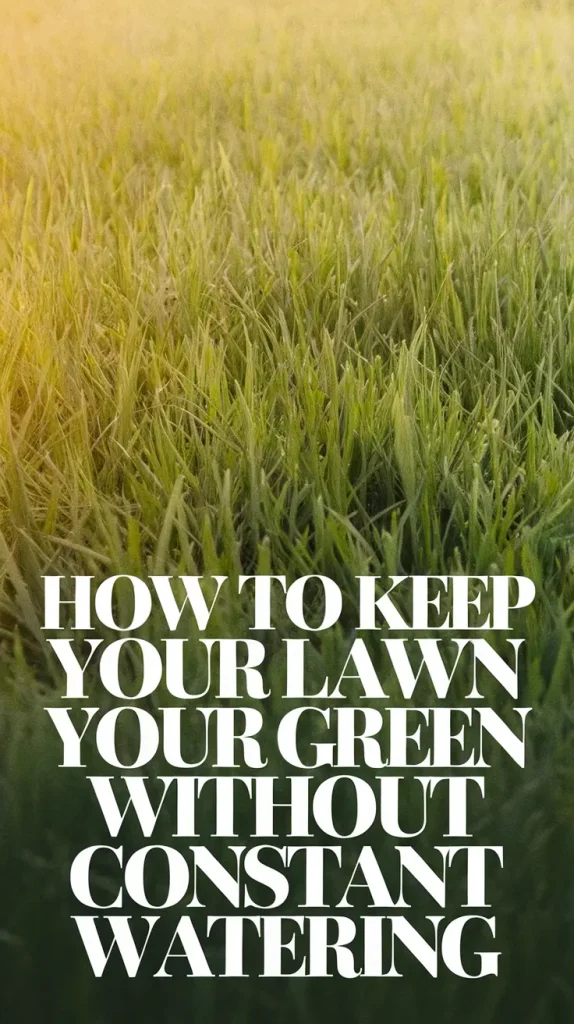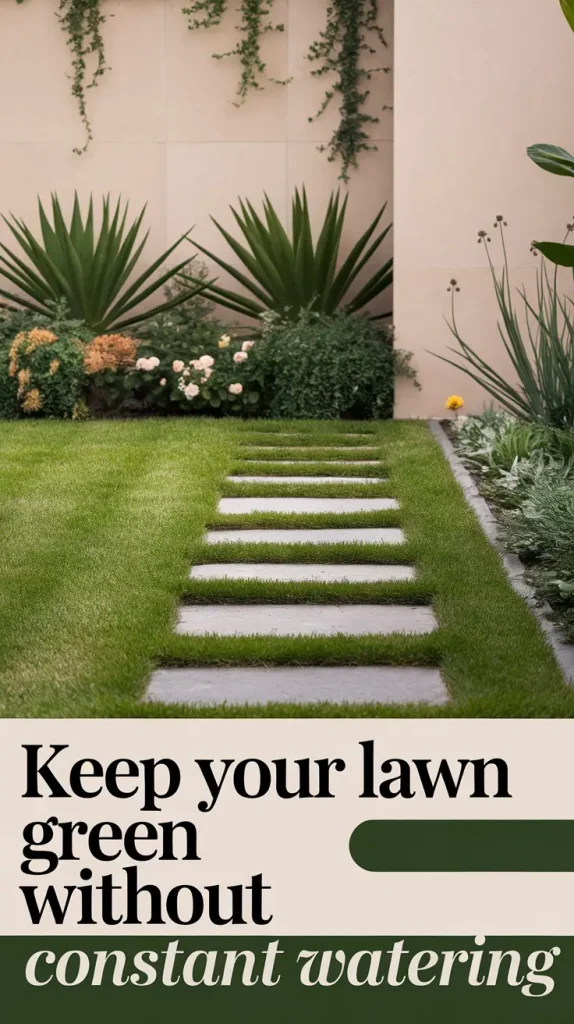How to Keep Your Lawn Green Without Constant Watering — Proven 2025 Tips

Did you envision your grass is always dying of thirst even after taking good care of it? I used to think this same way too. I used to grapple with my garden hose in rescuing grass from looking dead during summer months.
If this has ever happened to you, Trust me, I can relate. Truth be told, preserving a green lawn without continuous watering is impossible to maintain. After conducting several experiments and some tactical failures, I can proudly say that maintaining a lawn full of greenery is achievable without worrying about your water bills or weekends.
In this article, I explain my personal experience achieving a gorgeous and easy to care for lawn. You will learn some ecological hacks like proper irrigation and grass selection as well as some unusual techniques that helped me immensely. Let’s get started and transform your lawn!

1. Choose the Correct Grass for Your Climate
This was unexpected:
Not all grasses thrive with limited water. I used to think any patch of green could survive the dry spells if I watered enough. Spoiler: Not the case.
Understanding Different Types of Grasses
The first thing misinformed me was assuming all grasses could work. Some are drought resistant; here are a few that worked wonders for me:
- Bermuda Grass: Endures heat and limited watering making it perfect for warmer climates.
- Zoysia Grass: Forms a thick, carpet-like lawn.
- Fescue: Ideal for cooler regions, it requires less water than average lawns.
- Buffalo Grass: Native to the Great Plains, almost thrives on neglect.
My Experience:
After years of struggling with bluegrass, switching to Bermuda was easy. The difference was remarkable. Bermuda didn’t require much maintenance during dry periods which helped me garner time.
Caution: Investigate which grass types occur natively in your area. They tend to be adapted to the local environment and need less water.
2. Mulch Your Lawn: Nature’s Moisture Lock
Carefully preserving moisture and nutrients is critical for maintaining healthy turf. The first step towards achieving this can start with something simple.
There’s a common saying that ‘the best fertilizer is a farmer’s footsteps’. Based on this, if I keep my grass clippings after mowing the lawn and do not bag them, I could reap tremendous benefits.
Benefits of Mulching
- Moisture Conservation: Lawn clippings minimize moisture loss from evaporation.
- Nutrient Recycling: Clippings return some of the important nutrients to the soil when they decompose.
- Deter Weeds: A thicker layer of mulch from grass clippings annoying weeds.
What to Use for Mulching:
- Grass clippings that can be collected after cutting
- Wood chips and bark to define garden borders
- Compost used as a light, secondary top layer.
3. Aerate the Soil: Let Your Lawn Breathe
We’ve all been here at least once—and it’s quite the frustrating experience.
Your lawn has patchy spots with no clear reason behind it. Because in reality, built-up compacted soil paired with lack of air space is likely suffocating roots. Something as simple as aeration could fix this in a couple minutes.

The Benefits of Aeration – Why It Works
The compacted layer of soil inhibits water from penetrating down to the roots. Aeration, which is the process of perforating the soil with holes, helps improve soil aeration, increases water absorption, and dampens runoff.
To Aerate Your Lawn, Follow These Steps:
- Get The Right Equipment: For smaller areas, spike aerators work best while core aerators are more suited for larger areas.
- The Right Moment: It should be during spring or fall when the soil is moist – but not too moist.
- Maintenance After Aeration: Follow up by watering the lawn to encourage deeper root growth.
My Thoughts:
Integrating aeration into my seasonal tasks helped improve watering efficiency. I observed that grass retained its green color for a longer duration, and it felt like the soil finally started to work with me!
4. Effective Watering Techniques: The Right Amount of Water Down to a Science!
The surprising revelation for myself was that:
Seeing measurable improvements on my lawn after watering less frequently but for longer durations at a time surprised me. Initially, I thought that frequent watering was crucial to maintaining health, but strong root systems appreciate infrequent deep soakings.
Deep Watering Guidelines
- Water during the early morning to prevent evaporation.
- Minimize water wasting with a soaker hose.
- Target 1 inch of water over the week in 1-2 sessions.
My Routine:
I changed my sprinkler schedules to twice a week for longer durations. The grass started recovering and those annoying brown patches were gone.
Table: Watering Schedule for Various Types of Grass
| Grass Type | Water Frequency | Best Time to Water |
|---|---|---|
| Bermuda | Once per week | Early morning |
| Zoysia | Once every ten days | Late evening |
| Fescue | 2 times a week | Early morning |
| Buffalo | Once every two weeks | Early morning |
5. Drip Irrigation Systems
My initial experiments with these systems were driven by the fact:
Dragging hoses to water plants manually had not only proven arduous, it also caused me great discomfort due to the inconsistent watering coverage. A friend had suggested drip irrigation to me, and being someone who had already gotten skeptical of a great many things, I was not enthralled. However, skepticism could not stand my astonishment on its efficiency after I installed one of these devices.
Why Drip Irrigation Is Efficient
- Minimal Evaporation: Water is not lost in the air.
- Customizable: Can be targeted to specific plants or beds.
- Low Maintenance: Compared to traditional sprinklers, drip irrigation leaks and blocks less.
Thoughts From Experts
Install timers to automate watering in schedule intervals. I have mine set for 30 minutes, two times a week, and my lawn thrived.
6. Create Barriers for Winds and Shade
The first time I noticed:
Bare lawns without barriers dry out faster have faster moisture loss. Adding shrubs or low fences helped break up wind patterns made a difference.
Fences or Shrubs To Help Block Winds and Provide Shade:
- Tall grasses along the edges of the lawn
- Strategically placed trees to shade vulnerable areas
- Low profile fences to cut wind exposure
- Shrubs to help add barriers around yards.
To Conclude
I know keeping lawn blood green without constant water and effort sounds impossible, but trust me with the proper approaches, It’s achievable and with the right method, very easy to manage. Making the proper choice of the grass, applying mulch, aerating soil, along smarter watering techniques is all it takes.
Listen to me: My lawn changed from a thirsty disaster to flourishing and a rich green after I implemented changes. And, I got my weekends back!

